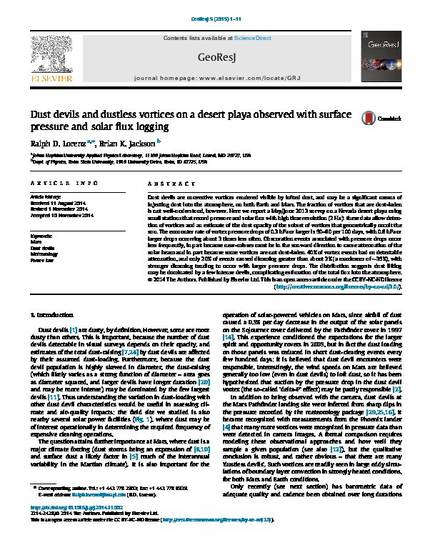
Dust devils are convective vortices rendered visible by lofted dust, and may be a significant means of injecting dust into the atmosphere, on both Earth and Mars. The fraction of vortices that are dust-laden is not well-understood, however. Here we report a May/June 2013 survey on a Nevada desert playa using small stations that record pressure and solar flux with high time resolution (2 Hz): these data allow detection of vortices and an estimate of the dust opacity of the subset of vortices that geometrically occult the sun. The encounter rate of vortex pressure drops of 0.3 hPa or larger is 50–80 per 100 days, with 0.6 hPa or larger drops occurring about 3 times less often. Obscuration events associated with pressure drops occur less frequently, in part because near-misses must be in the sunward direction to cause attenuation of the solar beam and in part because some vortices are not dust-laden. 40% of vortex events had no detectable attenuation, and only 20% of events caused dimming greater than about 2% (a maximum of ∼35%), with stronger dimming tending to occur with larger pressure drops. The distribution suggests dust lifting may be dominated by a few intense devils, complicating estimation of the total flux into the atmosphere.
This document was originally published by Elsevier Ltd. in GeoResJ. This work is provided under a Creative Commons Attribution-NonCommercial-NoDerivs 3.0 license. Details regarding the use of this work can be found at: http://creativecommons.org/licenses/by-nc-nd/3.0/. doi: 10.1016/j.grj.2014.11.002
